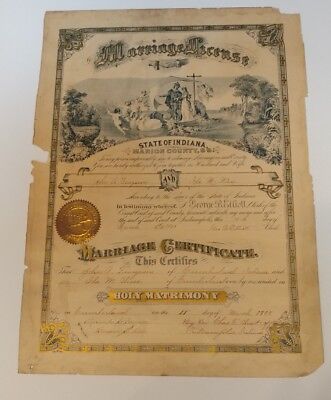The Rectangle, or trading range, materializes when an asset oscillates between parallel horizontal lines. Acting as a consolidation phase, traders monitor breakouts from the rectangle as a signal of a new trend. The width of the rectangle often serves as a target for the price movement post-breakout, aiding traders in setting realistic expectations. Remember, each trader’s interpretation can vary, and what works for one might not necessarily work for another.
Ascending Triangle pattern
- New sellers enter aggressively after spotting a candlestick pattern.
- The corrective second drive makes traders question the sustainability of the trend.
- The White candle gaps down on open, but the buyers show real demand throughout the day to retrace more than 50% of the previous day’s losses.
- The double top is characterized by two consecutive peaks that reach approximately the same price level, separated by a moderate trough.
- Support and resistance levels are also crucial, as they help in identifying where the price might pause or reverse.
There are different types of Candlesticks patterns help us see the price movements of any stock on the charts. Most traders commonly use candlestick charts due to their visual clarity, displaying open, high, low, and close prices effectively. This pattern can signal the end of an uptrend — at least for the time being.
That’s something we thought about when building the StocksToTrade platform. Then the price moves above the original resistance before pulling back. Finally, there’s another move upward that stops at the first resistance line. Although Candlesticks have many advantages, they can seem like information overload to the beginner. These two lines should be relatively equal in length, with at least two touches on each side of the parallel lines before a breakout. Below, we will discuss the most famous and widely known patterns that every trader knows about and has the ability to comprehend.
Traders use continuation patterns to identify opportunities to join the existing trend and ride the wave further. The Bearish Wolfe Wave forms after an uptrend with five structured waves showing slowing bullish momentum. The Parabolic Curve pattern forms when price accelerates upwards at an increasing rate, creating a steep, curved trajectory that resembles a parabolic arc. A Shakeout Pattern occurs when price briefly moves below a key support level, triggering stop-loss orders, before quickly reversing upward. This trading pattern reflects sustained selling pressure, with sellers dominating and pushing the price to lower levels. They are often driven by market news or significant events, reflecting high volatility.
Which time frame is best for trading?
You can expect the price to either trade in a range or begin a downtrend. Because human emotions drive the markets, and human nature rarely changes. An understanding of these patterns, combined with a solid trading strategy and risk management principles, can significantly enhance a trader’s ability to make profitable trades. Remember, the key to success in day trading is not just recognizing patterns but also understanding their implications and how they fit into the broader market context.
The rounding bottom pattern in chart analysis resembles a “U” shape, with the price trending downwards initially, reaching a trough, and then reversing to trend upwards again. The psychology behind the rounding top pattern is that after a strong advance, buyers become exhausted and the rally runs out of momentum. This imbalance leads to sideways and downward arc price action as buyers and sellers struggle to take control. The rounded shape shows the transition from an uptrend to a downtrend.
Bullish and Bearish Engulfing
They are a fundamental technical analysis technique that helps traders use past price actions as a guide for potential future market movements. After the ‘hump’ candlestick, there is usually a gap down and a long black candlestick that indicates the reversal. The double bottom is a bullish reversal chart pattern that forms after a downtrend and signals a potential trend change from bearish to bullish.
- When the opening price surpasses the closing price, a filled candlestick—typically black or red—is produced.
- They form after a sharp price movement, indicating a brief period of consolidation before the trend continues.
- The ‘run’ usually retraces only a portion of the original ‘bump’ before prices resume trending in the original direction.
- The double-top pattern happens when the market doesn’t have enough bullish momentum.
- The price managed to take support from the support below, which was followed by a series of higher highs indicating the possibility of a breakout of the rectangle on the upper side.
Flags
These patterns are created by plotting the prices of an asset over a specific period, typically using a line chart or candlestick chart. Traders and analysts use chart patterns to identify potential trends, reversals, and trading opportunities. The descending triangle chart pattern is considered a reliable continuation or reversal point in the market, with an 87% success rate on an upward breakout in bull markets. This is because buyers begin to take control of the market when the price breaks above the triangle. Technical analysis, which traders use to predict movements based on historical market activity, depends heavily on stock chart patterns. Recurring price behaviours give rise to patterns like the head and shoulders, wedge, or double bottom patterns, which indicate whether an asset’s price will grow, fall, or move sideways.
What Chart Patterns Are Common in Forex?
After the trend fails to break through the resistance level twice, it goes into a reversal phase. Then the trend returns to the support threshold and begins a downtrend, breaking through the support line. It is often considered a resting or cooling down period, and most technical analysts expect a breakthrough of the resistance or support line to mean a continuation of the uptrend. I have written a book and produced countless hours of videos and podcasts dedicated to the technical analysis of the stock markets.
A short position is taken on the break of a lower low with stops above the prior swing high to trade this pattern. It’s crucial to manage risk and monitor price action for signs of a reversal to avoid being caught in a bullish reversal. The pattern is complete on a break above the descending highs trendline, signaling it’s time to exit shorts and reverse to longs. Spike patterns are usually continuation patterns, extending the current trend. For example, in an uptrend, a bullish spike shows strong momentum from buyers. But profit-taking quickly causes prices to fall back into the upper range.
Whenever you see something that looks like a pattern forming on your chart, go to your cheat sheet to see if any pattern matches what’s on your chart. Jesse has worked in the finance industry for over 15 years, including a tenure as a trader and product manager responsible for a flagship suite of multi-billion-dollar funds. It’s led by Nathan Michaud, a world-class trader and educator, who has built an impressive collection of stock trading courses and resources.
You may look to trade it when the price breaks below the lower support line on the narrowing half. A rising wedge is a bearish reversal pattern that forms when the price moves upward within converging trendlines. The highs and lows both trend higher, but the slope 11 most essential stock chart patterns of the lows is steeper, indicating weakening momentum. In contrast to chart patterns like the bullish ascending triangle, descending triangle stock market patterns are the bullish inverse. The stock’s price repeatedly bottoms out at the support line, with increasingly lower highs until the lines converge, implying a breakout below the support line is likely. The Triple Top is a bearish reversal pattern that signals a potential trend change.

 gefällt mir
gefällt mir
